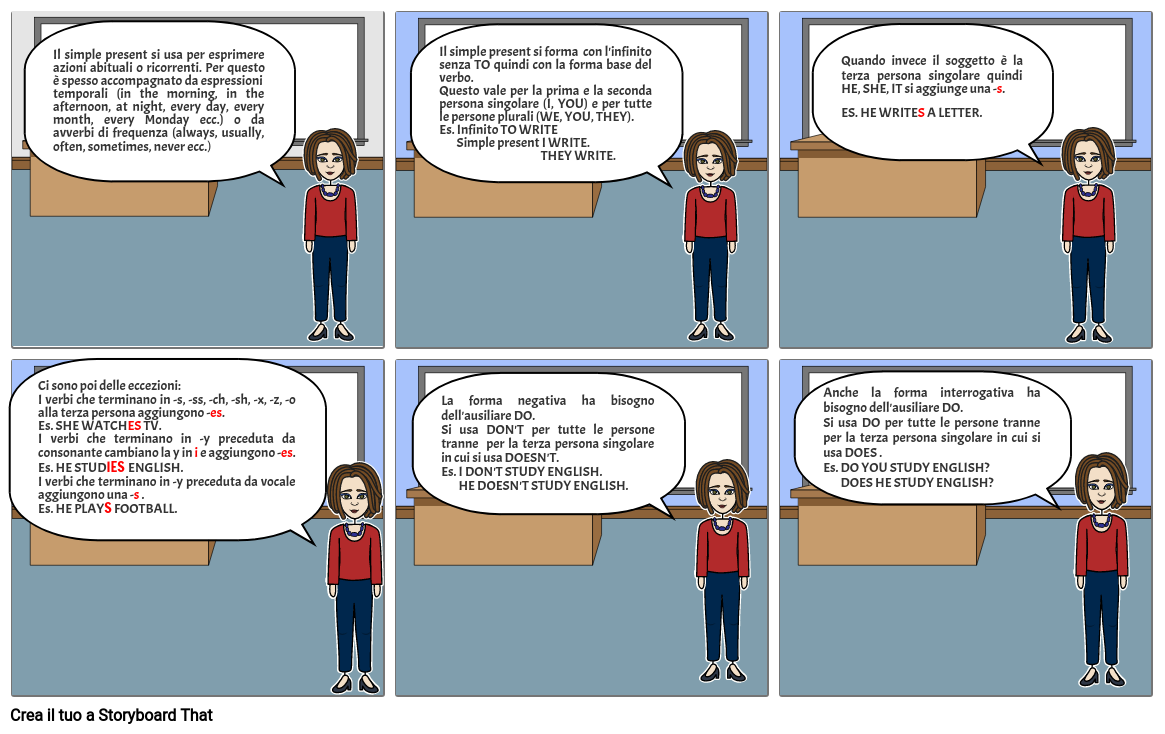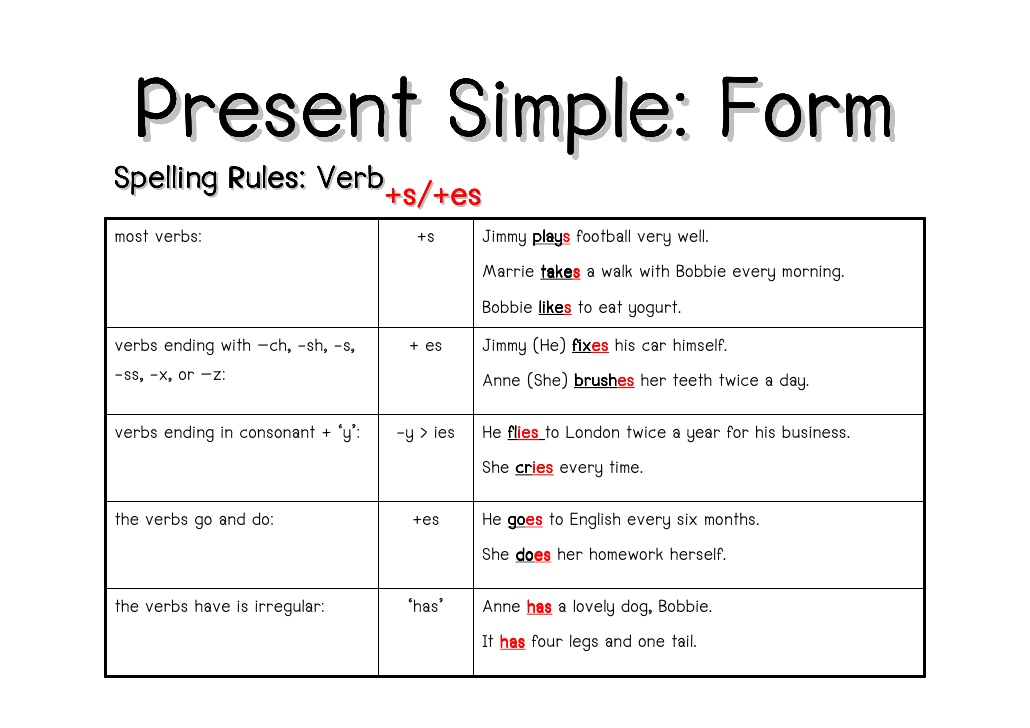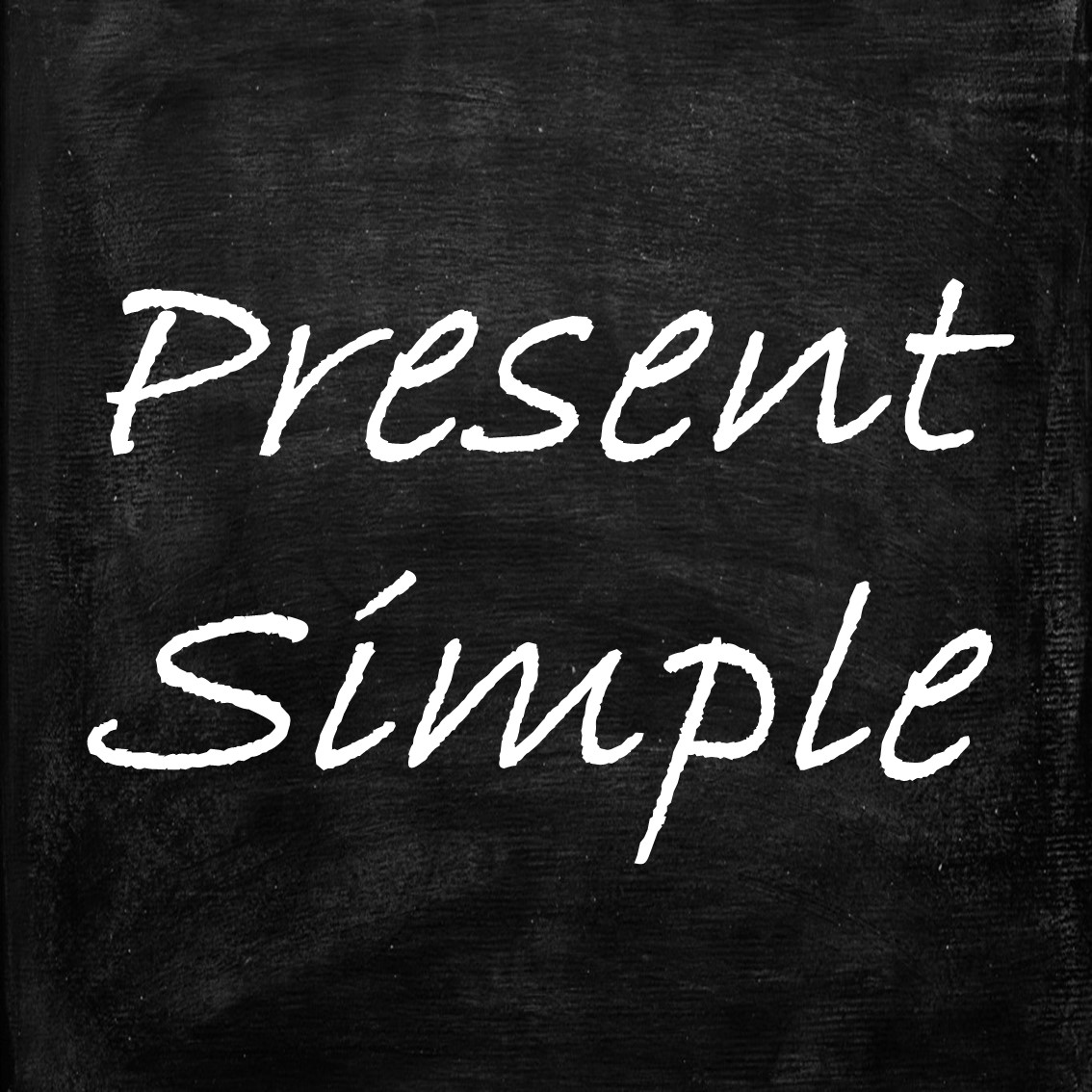
PRESENT SIMPLE Storyboard by a1eee295
Present Simple The Present Simple tense is the most basic tense in English and uses the base form of the verb (except for the verb be ). The only change from the base is the addition of s for third person singular. How do we make the Present Simple tense? There are two basic structures for the Present Simple: 1. Positive sentences 2.

Present Simple Practice 1 English Daisies
1. 'Understand' is something that you do regularly. 2. 'Understand' indicates something that's generally true. 3. 'Understand' is a state - there is one moment when you start to understand but then the state continues. 4. 'Understanding' is something you are planning to do in the future. Correct.

Worksheets, Presente Simple, Simple Present Tense, Interactive
The positive is really easy. It's just the verb with an extra 's' if the subject is 'he', 'she', or 'it'. Let's take the verb 'play' as an example: Don't forget the 's'! Even really advanced students do this! For a few verbs, there is a spelling change before the 's'. For example, 'study' becomes 'studies'. Click here for a list of these verbs .

New Have In Present Simple most complete Sado
When to use the Present Simple Tense. We use the simple present tense for 3 main reasons in English: 1 For Facts and things that are generally true. Doctors look after patients in hospitals. Brazil is a big country. 2 For habits, routines, repeated actions. I usually go out for dinner on Fridays. I wake up at 6 am every day.

My English Corner for 2nd ESO Present Simple
Present simple Level: beginner The present tense is the base form of the verb: I work in London. But with the third person singular ( she / he / it ), we add an -s: She works in London. Present simple questions Look at these questions: Do you play the piano? Where do you live? Does Jack play football? Where does he come from?

My English Corner for 2nd ESO Present Simple
Grammar explanation We can use the present simple to talk about things we do regularly. I go to the gym three times a week. We drink coffee at work. We can also use it for things which are generally true. She loves her job. A lot of people work at home now. Remember that we add s or es for he, she and it. Sometimes we also change y to i .

. Present Simple and Present Continuous
The first thing most, if not all your students did that day was surely 'wake up'. Write 'I wake up' on the board and then ask students what time they woke up. Then complete the sentence on the board to make the present simple sentence. For example, 'I wake up at 8.'. Do the same for other daily actions / routines and write these.

Present Simple презентация онлайн
To talk about habits or actions that repeat. To talk about things that are habits (things you do regularly) or that are repeated, we also use the present simple. We could use the present simple in the sentence, "I read the newspaper every morning," for example, to show that reading the newspaper is a habit.

Present Simple
Forming the third person singular Most of the time, the simple present tense is the same as the verb's infinitive (aka base) form. The third person singular is used when the subject is neither the speaker nor the person being addressed and is a singular noun or pronoun (e.g., "he," "she," "it"). To form the third person singular in the simple present tense, "-s" is usually.

PRESENT SIMPLE TENSE Part 2 Making Sentences (Form) Basic English Gr...
Formy wyrażania przyszłości - Present Simple wprowadzenie Present Simple Present Continuous "will" future to be going to to be to Present Simple Tak, tak to czas teraźniejszy. Jednak to właśnie takich form czasownika używa się, gdy mówimy o rozkładach jazdy autobusów, pociągów, samolotów, o planach zajęć, grafikach itp. pozostałe zakładki:

Czas Present Simple Budowa, użycie, zastosowanie, przykłady Speakin.pl
Present simple ( I work ) - English Grammar Today - a reference to written and spoken English grammar and usage - Cambridge Dictionary

The Present Simple YouTube
The past simple is usually used: I reached school one hour ago. Also, the verb reach doesn't take a preposition, so delete 'at'. The second sentence is correct. But it's the present simple, not the present perfect (i.e. the verb have is the main verb, not an auxiliary verb). Have a look at our Present perfect page for more explanation. I hope.
เรียนเรื่อง*เรื่องน่ารู้ของ Present Simple วิชาภาษาอังกฤษ ระดับชั้น
The simple present tense is a verb form used to talk about habits, unchanging situations, facts, and planned events in the near future. The simple present tense of most verbs is the infinitive form (e.g., "sing"). However, the third person singular (e.g., "he," "she," and "it") takes an "s" at the end of the verb (e.g., "write" becomes "writes").

Structure ‘Use of the present simple’ Fly High English
The present simple tense is typically one of the first verb tenses that new English students learn. It is used to describe action that takes place on a regular basis. The present simple also can be used to express feelings, facts, opinion, and time-based events. Don't confuse the present simple tense with the present continuous tense, which is.

การใช้ Present Simple ที่ไม่ Simple สมชื่อ English Fandom
Present Uses. 1: We use the present simple when something is generally or always true. People need food. It snows in winter here. Two and two make four. 2: Similarly, we need to use this tense for a situation that we think is more or less permanent. (See the present continuous for temporary situations.)

Present Simple самое простое время в английском. Смотрите разбор и
The simple present is a verb tense with two main uses. We use the simple present tense when an action is happening right now, or when it happens regularly (or unceasingly, which is why it's sometimes called present indefinite). Depending on the person, the simple present tense is formed by using the root form or by adding s or es to the end.